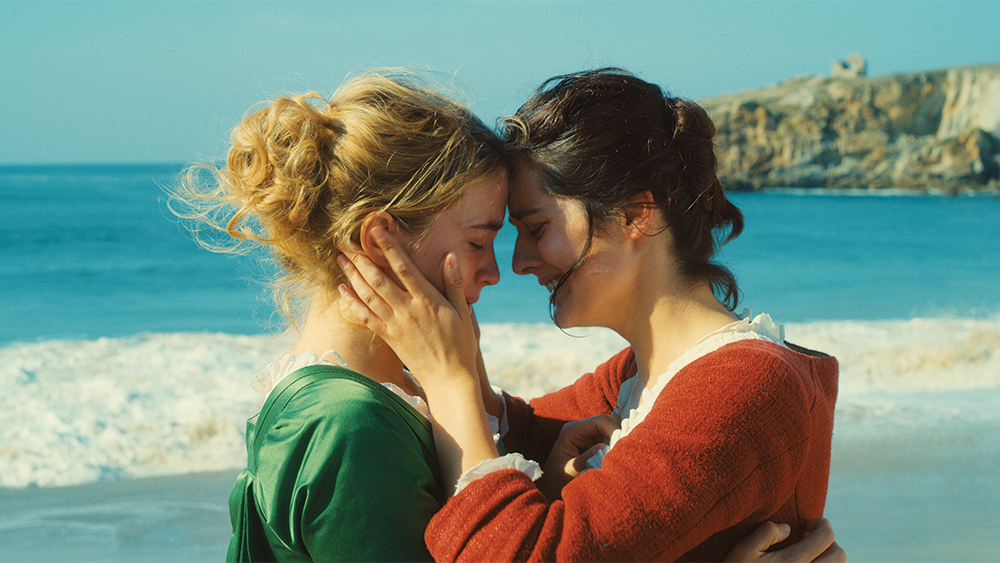‘Portrait of a Lady on Fire’ Cinematographer, Costume Designer on the ‘Painterly’ 18th-Century Look
By Tomris Laffly
LOS ANGELES (Variety.com) – “Painterly” might be an overused term to describe a certain aesthetic of period cinematography, informed by candlelit interiors and sweeping outdoor compositions. But it seizes the essence of French writer-director Céline Sciamma’s deeply feminist 18th-century gay romance set on the coast of Brittany, “Portrait of a Lady on Fire,” which debuted in theaters on Valentine’s Day.
To bring to life the story of unwilling bride-to-be Héloïse (Adèle Haenel) and artist-for-hire Marianne (Noémie Merlant), tasked with painting a secret wedding portrait of Héloïse, Sciamma and cinematographer Claire Mathon visited art museums alongside classically trained painter Hélène Delmaire. Through their research, the trio aimed to define Marianne’s style and process on the canvas and make a movie that leans into artful compositions.
Delmaire created most of Marianne’s paintings in the film, drawing inspiration from 18th- and 19th-century greats like still-life genius Jean-Baptiste-Siméon Chardin, miniaturist Adélaïde Labille-Guiard, portrait painter Élisabeth Vigée Le Brun and Jean-Baptiste-Camille Corot, specifically in the way Corot painted portraits of women within landscapes. To realize Sciamma’s vision, Mathon used her lens to capture the pleasure of living inside the women’s love story, embracing the private desire echoing in the characters’ faces and movements through long takes, close-ups and careful blocking. She also relied on rich variations of natural light. “It forces us to remain humble,” the DP explains.
Meanwhile, costume designer Dorothée Guiraud, following Sciamma’s idea to have one main outfit per character, collaborated with Mathon to strike a balance between historical authenticity and modern-day sensibilities. “We decided to treat the costumes in a refined and pure way, to have a clear reading of each character,” Guiraud explains.
After researching the era, she put together a board of images, fabric swatches and color schemes. The green dress in which Héloïse would be drawn by Marianne was the centerpiece, and designed realistically for the time. Yet Guiraud purposely left out embellishments like ribbons and embroidery, which would have been common in the period. “I imagined [something] sophisticated, since it’s the dress in which Héloïse would be presented to her future spouse,” she recalls. The costumer wanted to avoid “any visual detail that would disturb the purity of the image.”
Yet accessories weren’t entirely off-limits. Scarves that masked part of the actors’ faces during their seaside outings contributed to the character arcs. “The idea of hiding Marianne’s and Héloïse’s lips was done to bring eroticism [into] their first kiss,” Guiraud says.
The costume designer acknowledges that the heavy fabrics, narrow torsos and tight corsets impacted the actors’ posture and movement. Still, practical details like the pockets in Marianne’s red dress were not only permitted but accurate to the period. “Women’s clothes had them in the 18th century.” Guiraud explains. “But later on, they were removed.”
Cinematographer Mathon says she found the images Sciamma envisioned to be powerfully precise and choreographic. “The film,” the DP explains simply, “is about creation and gaze.”

